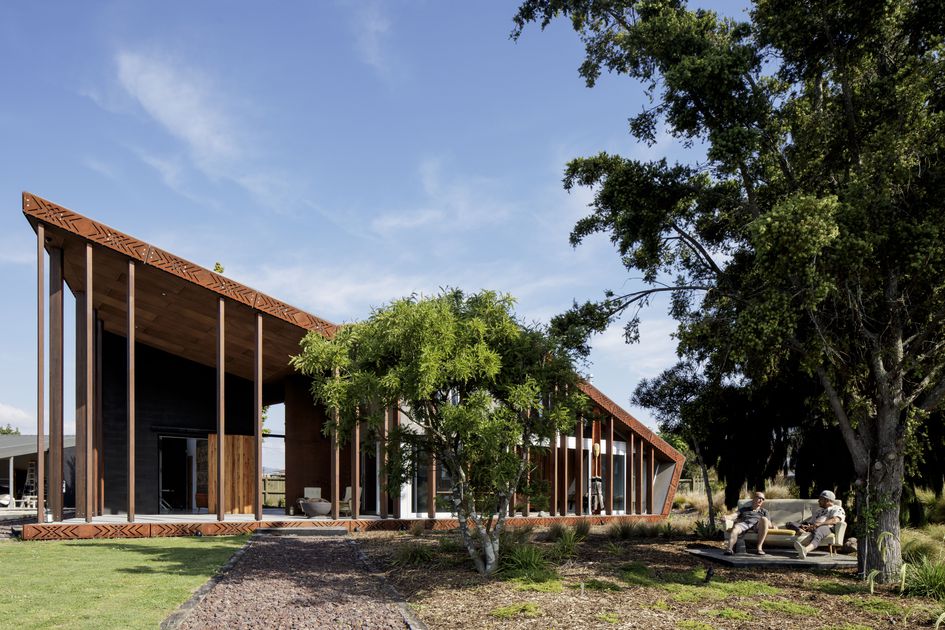Tūrama, meaning first ray of light at dawn, is named after Hine-i-Tūrama from whom the land in the Fairy Springs originates. She was built to honour a whakapapa that can be traced back 16 generations. Conceptually, her orientation keys into four historically important ley lines, genealogically critical connections in time and place which helped to create the geometry of the dwelling which is a very personal expression of family identity.
An NZIA national award winner and a World Architecture Festival Award finalist in 2018, the homestead operates as a multi-generational retreat – offering a female cloak of shelter, protection and manaakitanga for whānau and guests. Weathered steel bargeboards and deck trims, which wrap around the unique angular forms are decorated with taniko design, a traditional pattern abstracted from the family’s ceremonial cloak: Te Kakahu o Kouma. A spiritually energised stone, called a mauri, was collected from nearby Maketū and ceremonially embedded beneath the concrete floor, signalling project commencement in 2011. Directly above the mauri is the fireplace where all the ley lines intersect. Expressed as cut lines in the polished floor, they radiate out into the landscape to GPS-located distant points of ancestral origin.
The vision for Tūrama was for her to be a culturally familiar, purpose-built dwelling to meet, gather and shelter in times of celebration and in crisis, somewhat akin to a wharenui. There are communal sleeping areas and a grand covered deck with a roof supported by forest-like timber uprights. An elegant carving of the ancestral female leader, Waoku - Deep Forest - stands guard amongst the uprights in her own totara vessel.
It has been seven years since project completion and Aotearoa has been through tumultuous times. Paul Tapsell, who has fond memories of growing up on the land, learning to till the soil in the garden of his grandparents, sees the retreat as a way to pay it forward. From inception Tūrama was designed to give back to future generations. Now a Principal at Takarangi Research, an independent Māori-led organisation set up to serve Māori communities, he has a deep interest in oral historical perspectives and customary knowledge and Tūrama retreat tangibly ties into this as a research base. It is where Paul often brings together academics, specialists, Māori experts and postgrad students to hui (meet) and develop climate mitigation plans for NZ’s most vulnerable tribal communities. “It is ideal for our retreat workshops. She provides a uniquely modern hui and accomodation experience, grounded by 16 generations of ancestral presence.”
On occasion, Tūrama also hosts high end international visitors, looking for a bespoke Māori accommodation experience. Otherwise, she is generally providing whānau with an ancestral home to where they can retreat, relax and refresh before returning to their high paced urban realities.
RTA Studio has an ongoing interest in trying to find an architecture that identifies with our bi-cultural communities. At Tūrama, the architecture evokes a conversation that continues to be an incredibly important one for Aotearoa.
